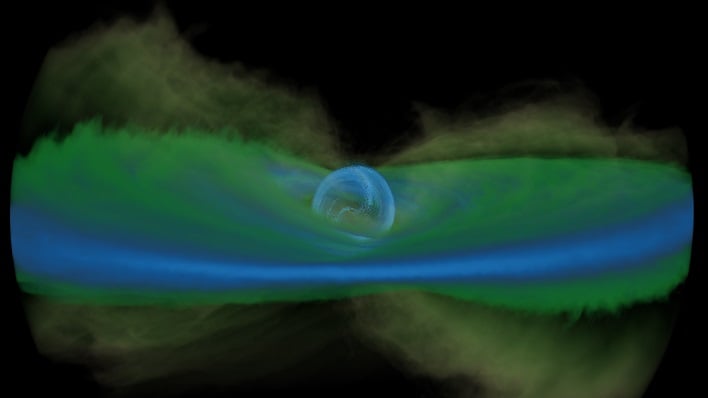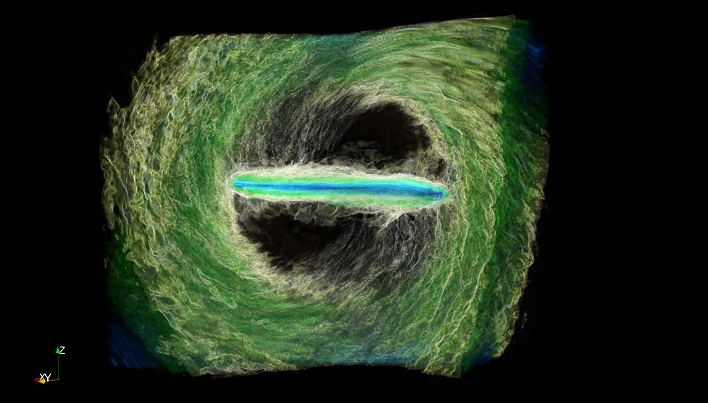3D Simulation Reveals Supermassive Black Holes Eat Much Faster Than Expected

Hollywood may have some people believing that a black hole is a wormhole that provides a portal to another dimension or universe. In reality, however, these enigmatic objects located throughout the universe are not actually holes, according to NASA. They are extremely large concentrations of matter that are packed into very tiny spaces, and even though scientists and astronomers have been attempting to study them for many years, not much is known about them. One thing that scientists do believe is that these mysterious cosmic objects have an insatiable appetite, chewing on their food over long periods of time.
A new study led by Northwestern University (NU) is challenging the old hypothesis that black holes eat slowly. According to the team's high-resolution 3D simulations, black holes may in fact devour their food much faster than previously thought.
In a press release from NU, it remarked that the "spinning black holes twist up the surrounding space-time, ultimately ripping apart the violent whirlpool of gas (or accretion disk) that encircles and feeds them." The result is the disk tearing into the inner and outer subdisks, with the black hole first annihilating the inner ring. After that, debris from the outer subdisk flows inward to replenish the gap left behind by the consumed inner ring, and the entire process then repeats itself.
This new finding could help explain why some of the brightest objects in the night sky, which include quasars, abruptly flare up and then die out without any explanation.
"Classical accretion disk theory predicts that the disk evolves slowly," remarked Nick Kaaz, lead author of the new study. "But some quasars, which result from black holes eating gas from their accretion disks, appear to drastically change over time scales of months to years." Kaaz explains that the variation is drastic and appears like the inner part of the disk, where most of the light originates from, ends up getting destroyed and then replenished. He contends that classical accretion disk theory cannot explain this variation, however, the team's new simulations potentially could.

The results indicate that these "fast cycles of eat-refill-eat" may explain so-called "changing-look" quasars. Typical quasars are extremely bright objects that emit 1,000 times more energy than the entire Milky Way's 200 billion to 400 billion stars. Changing-look quasars are even more luminous and appear to turn on and off over a period of months, which is a stark comparison to a typical quasar, according to NU.
The team says that the new simulations could potentially explain quasars, as well as ongoing questions about the mysterious nature of black holes. Kaaz added, "How gas gets to a black hole to feed it is the central question in accretion-disk physics. If you know how that happens, it will tell you how long the disk lasts, how bright it is, and what the light should look like when we observe it with telescopes."
Top Image Credit: A. Tchekhovskoy/Nick Kaaz/Northwestern University

